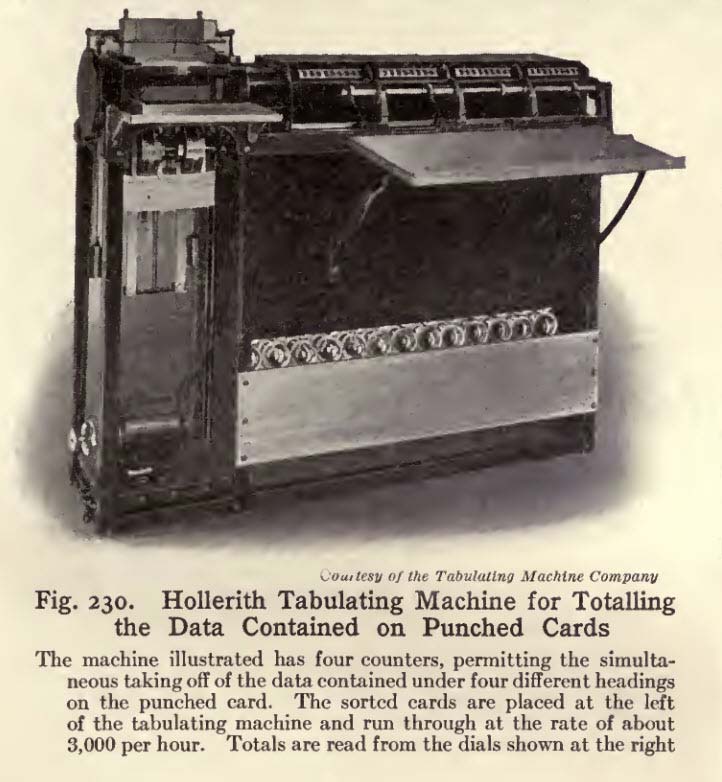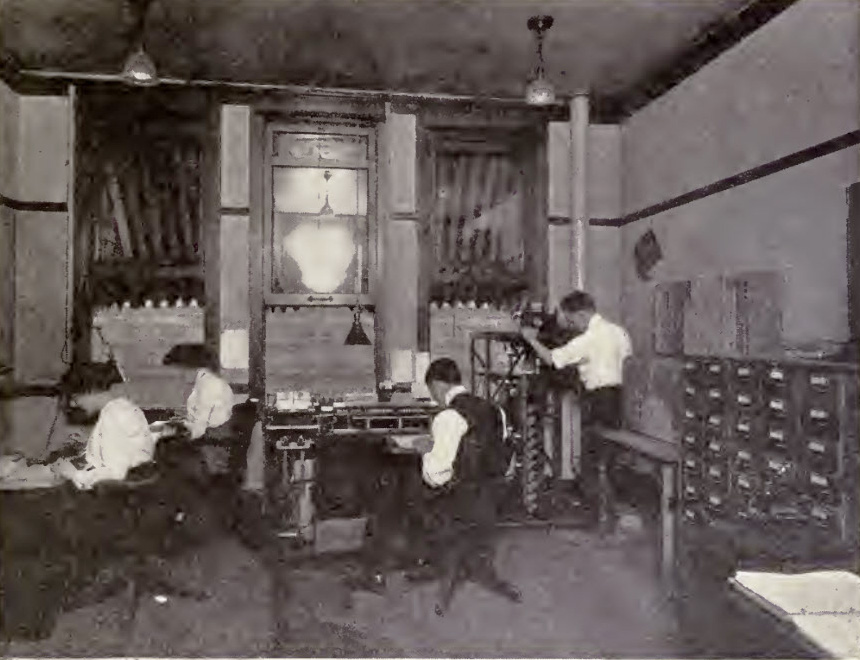Hollerith Type 1 Tabulator 1906


From [1]: "The cards are placed in the machine at the left and are fed through automatically, one by one, so that electric contacts are made wherever there are holes punched in the card. The electric contacts cause the counting dials to revolve by just the right amount to record properly the data punched for each hole. After any group of cards has been run through the machine the totals can be read off from the counting dials and written down by the operator. Then the machine is ready for some other set of cards ... By having several counting heads on the same machine, different sets of information may be taken from the cards simultaneously, thus frequently permitting one run of the cards through a tabulating machine to give all the data which may be required."

Once punched, the cards are always available and may be filed for record purposes. It is frequently a great convenience to be able to run through the machines cards for several years back so that comparative statistics may be made. The preservation of the cards makes in unnecessary to dig out the original records. The uniform size of the cards makes it possible to preserve large quantities of them with comparatively little labor."
- Willard C. Brinton, Graphic Methods for Presenting Facts, The Engineering Magazine Company, New York (Copyright 1914).
- Austrian, Geoffrey, Herman Hollerith: Forgotten Giant of Information Processing, Columbia University Press (1982).